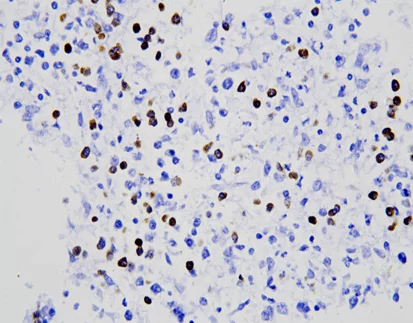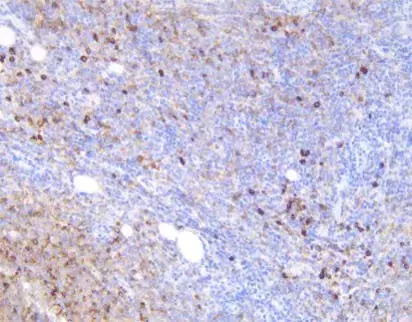Understanding Kappa and Lambda Light Chains

By admin
What Are Light Chains?
Light chains are small protein subunits that form an essential part of antibodies in the immune system. They come in two major types: kappa and lambda. Found in the blood serum and bodily fluids, these light chains are crucial for the immune response. They join with the heavy chains of an antibody to make a full protein that can find and destroy viruses and bacteria that are trying to infect the body. Structure-wise, they are made up of different amino acids that are put together in a specific way that helps the defense system work properly.
Role in the Immune System
Within the immune system, light chains play an active role in the defense mechanism. They help antibodies recognize and bind to antigens, which are harmful substances that the body needs to eliminate. This binding process is the first step in neutralizing pathogens and triggering an immune response. The diversity in the sequence and structure of light chains is what allows the immune system to recognize a seemingly infinite array of antigens, thus providing a robust defense against infections.
Importance of Kappa/Lambda Light Chains in Medical Diagnosis
Diagnosing Plasma Cell Disorders
One of the critical roles of kappa and lambda light chains in medical research is their utilization in diagnosing plasma cell disorders. Plasma cells are a type of white blood cell that make antibodies that fight off diseases. When these cells don’t work right, they can cause diseases like multiple myeloma, which is a cancer of plasma cells. Checking the amounts of kappa and lambda light chains in the blood can help find these diseases early, so they can be treated quickly and effectively.
Identifying Immunoglobulin Types
Immunoglobulins, or antibodies, vary based on the type of light chain they possess. By identifying whether an immunoglobulin has a kappa or lambda light chain, healthcare professionals can get insights into the nature and progression of certain diseases. This differentiation is particularly important in assessing the immune status of patients and understanding how their bodies are responding to infections or other immunological challenges.
Kappa vs. Lambda Prevalence in Conditions
In healthy individuals, the ratio of kappa to lambda light chains remains relatively stable. However, certain conditions can alter this balance. For example, an increased ratio of kappa to lambda light chains might indicate a disorder involving the overproduction of kappa light chains. Conversely, a lower ratio could be a sign of conditions like lymphoma or chronic lymphocytic leukemia, where lambda light chains are predominantly produced. Understanding these variations can guide clinicians in their diagnostic approach and subsequent treatment plans.
Kappa/Lambda Ratio: A Diagnostic Tool
How the Ratio is Calculated
The kappa/lambda ratio is calculated by dividing the concentration of kappa light chains by the concentration of lambda light chains in the blood. This ratio is a powerful diagnostic tool because it provides insights into the balance of these proteins, which can reflect underlying health conditions. A normal kappa/lambda ratio ranges from 0.26 to 1.65. Deviations from this range can be indicative of specific diseases or disorders, making it an essential parameter in medical diagnostics.
Implications of Abnormal Ratios
Abnormal kappa/lambda ratios can signal various medical conditions. A high ratio might indicate the presence of multiple myeloma, where plasma cells produce excessive kappa light chains. On the other hand, a low ratio could suggest the presence of light chain amyloidosis, a condition where misfolded light chains accumulate in tissues. Keeping an eye on the kappa/lambda ratio over time helps doctors figure out how well a treatment is working and spot when diseases start to get worse or return. This testing tool is very helpful for keeping an eye on and taking care of people who have problems with their immune systems or plasma cells.
High Ratio Cases
In cases where the kappa/lambda ratio is significantly elevated, it often points to disorders associated with an overproduction of kappa light chains. Multiple myeloma is a prime example, where malignant plasma cells produce excessive kappa chains, throwing off the natural balance. Other conditions like Waldenström’s macroglobulinemia, where excess antibody production occurs, can also result in high kappa/lambda ratios. Understanding these high ratio cases allows for targeted diagnostic and therapeutic strategies, potentially improving patient outcomes.
Low Ratio Cases
Low kappa/lambda ratios are generally indicative of diseases where lambda light chains are produced in excess. Conditions such as chronic lymphocytic leukemia (CLL) and certain types of lymphomas fit into this category. These diseases disrupt the normal production balance between kappa and lambda light chains. Identifying and understanding cases with low ratios is critical for early diagnosis and intervention, leading to more effective disease management.
Clinical Applications in Various Diseases
Multiple Myeloma Detection
Detecting multiple myeloma early can significantly improve treatment outcomes. The kappa/lambda light chain ratio is a reliable marker for diagnosing this type of cancer. Elevated levels of kappa chains often signal multiple myeloma, and monitoring this ratio over time can help assess the effectiveness of treatments and detect disease recurrence. With advancements in diagnostic technologies, the role of kappa/lambda light chains in multiple myeloma detection continues to grow.
Amyloidosis Screening
Amyloidosis is a condition characterized by the abnormal deposition of amyloid proteins in tissues and organs. Measuring kappa and lambda light chains can aid in screening for light chain amyloidosis, a specific subtype where misfolded light chains accumulate. Early detection through screening can lead to prompt treatment, potentially preventing severe organ damage and improving quality of life for affected individuals.
Monitoring Autoimmune Diseases
Autoimmune diseases occur when the immune system mistakenly attacks the body’s tissues. Keeping an eye on the kappa and lambda light chains can help you deal with these situations. If levels aren’t average, it could mean that the immune system is still responding, and keeping track of these changes can help doctors change their treatment plans as needed. Being able to track light chains gives us important information about how diseases are spreading and how well treatments are working.
Practical Considerations for Medical Professionals
Sample Collection and Testing Methods
Accurate measurement of kappa and lambda light chains requires precise sample collection and testing methods. Techniques like immunoassays are used to look at blood samples that are usually taken by venipuncture. Following standard procedures makes sure that test results are consistent and reliable. The people who work in medicine need to be aware of pre-analytical and analytical factors that might affect how accurate measurements are.
Interpreting Test Results
Interpreting kappa and lambda light chain test results requires a thorough understanding of normal reference ranges and the clinical context of the patient. These values can be changed by things like age, gender, and underlying health problems. To make better choices about diagnosis and treatment based on test results, working with specialists like hematologists or immunologists can give you more information and help.
Celnovte Biotech, a high-tech enterprise established in 2010, is dedicated to the research, development, production, and sales of precision diagnostic instruments and reagents for tumors. One of their notable offerings is the Kappa/Lambda Probe Kit. This kit is part of their comprehensive solution for immunohistochemistry, a field in which they have mastered the core research and development technology. The Kappa/Lambda Probe Kit, like all their products, is designed to provide high-quality results, contributing to the early screening, precise diagnosis, drug companion, and treatment monitoring of tumors.

The Kappa/Lambda Probe Kit is developed at the Celnovte Antibody R&D Center, which specializes in the development of IVD-grade immunohistochemistry primary antibodies. The center has two major development platforms: murine monoclonal antibodies and human monoclonal antibodies (single B-cell method). It also has a stable engineering expression platform, which can realize one-stop independent antibody development from immunogen to large-scale production. Celnovte Biotech takes pride in their IHC stainers, offering fully automated immunohistochemistry staining machines with a throughput of 60, completing staining in just 2.5 hours, effectively meeting the needs of departmental fully automated immunohistochemistry staining. Additionally, their H&E stainers provide high-quality staining results for hematoxylin and eosin, ensuring accurate and detailed visualization of tissue samples in pathology diagnosis. This ensures that the Kappa/Lambda Probe Kit, like all their products, meets the highest quality standards. With their commitment to providing first-class products and services, Celnovte Biotech is a reliable choice for anyone in need of a Kappa/Lambda Probe Kit.
Summary: The Growing Significance of Kappa/Lambda Light Chains
Kappa and lambda light chains are gaining recognition as crucial components in medical research and diagnostics. From aiding in the early detection of plasma cell disorders to offering insights into immune system function, their significance cannot be overstated. As research continues to advance, the applications of kappa/lambda light chains are poised to expand, offering new avenues for disease management and treatment. Understanding these light chains and their diagnostic capabilities is essential for medical professionals and researchers alike, paving the way for innovations in healthcare.
RELATED PRODUCTS









